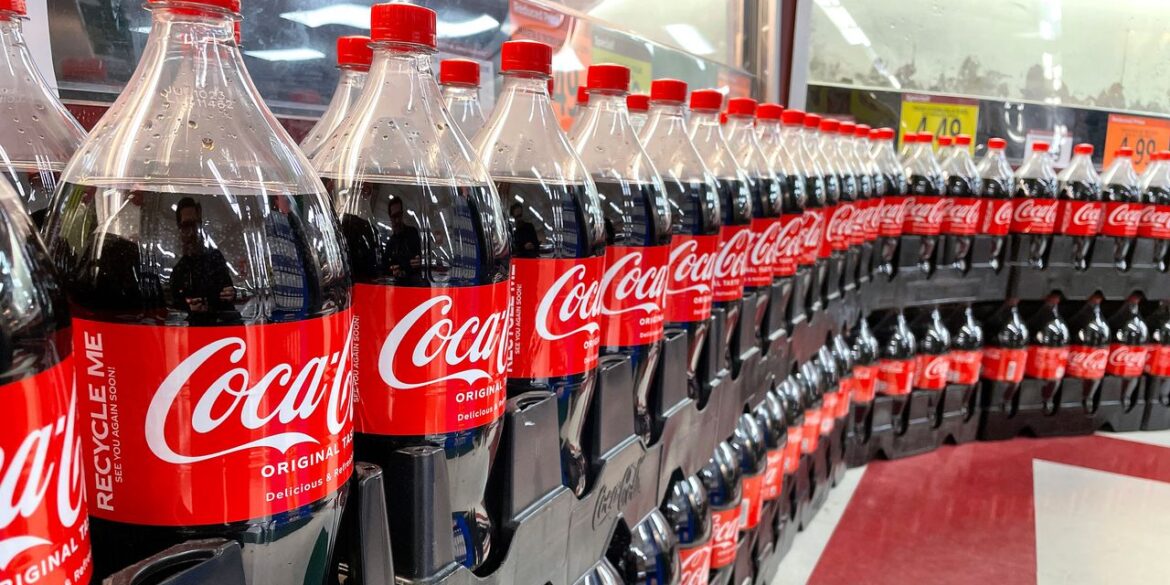Text size

Coca-Cola stock is in the Franklin US Low Volatility High Dividend Index ETF.
Justin Sullivan/Getty Images
The stock market has gotten more expensive, in a rally that has expanded to include stocks beyond Big Tech.
That has left many stocks looking less attractive, forcing some investors to cash out while they wait to grab shares at better prices. There is, however, a basket of equities that does look attractive.
The
S&P 500
has gained just over 20% from a major low point hit in early October, making it much pricier. The index trades at almost 19 times expected earnings per share for the next year, up from just under 15 times at the October low.
Sure, Big Tech stocks have done a lot of the work to make the market more expensive, but recently stocks from other sectors have been joining the rally. That includes economically-sensitive and smaller-capitalization names. Those two groups should see the fastest rebounds in earnings as the economy stabilizes when the Federal Reserve nears the end of its interest-rate hikes, which are meant to tamp down demand for goods and services.
Blink and you’ve missed the rally.
That’s why many fund managers now prefer to sit in cash that pays them a yield while they wait for stocks to drop to better entry points. The average portfolio manager holds about 5% of the fund in cash, according to a
Bank of America
survey that spans across trillions of dollars of assets under management. That’s not far from the peak of roughly 6% historically, but it’s above the lows of less than 4%.
Managers right now would rather hold cash rather than own too much stock, which is vulnerable to a decline should economic data or earnings disappoint—or if the Fed raise rates more. In addition, they can use that cash to buy stocks when and if they become cheaper. The risk, however, is that they’ll miss more upside in stocks, making it more difficult to buy stocks.
That’s why investors might want to consider the Franklin US Low Volatility High Dividend Index exchange-traded fund (ticker: LVHD). That’s home to names that have less volatile earnings and stock prices versus the broader market—and the ETF hasn’t soared to expensive levels. So any meaningful market downside likely won’t translate into such downside for this fund—yet it can still participate in some market upside, even if it underperforms.
The fund selects stocks with relatively high earnings stability, enabling these companies to grow their dividends over time, so investors typically can get paid even if the stocks don’t rise. The ETF includes large-cap stocks such as
Johnson & Johnson
(JNJ), utility provider
Southern
Company (SO),
Verizon
(VZ),
PepsiCo
(PEP),
Coca-Cola
(KO), and Philip Morris (PM). They’re all highly competitive in their industries so their earnings are fairly consistent. Plus, these industries at large—healthcare, consumer staples, and communications—wouldn’t see much of a hit to profits if economics demand falters. The ETF’s dividend yield is about 4.3%, better than the 3.8% yield on the ultrasafe 10-year Treasury.
Some might wonder why they should buy any fairly low-potential equity fund that yields not even one full percentage point more than Treasuries. The reason is there’s still some potential upside. Analysts expect aggregate earnings per share to grow modestly over the coming years, as these companies have some combination of pricing power, cash for stock buybacks or strategic acquisitions, and opportunities to create cost efficiencies.
“LVHD’s lower beta [volatility] arrangement adds a defensive tilt to our portfolio,” said Jason Ware, chief investment officer of Albion Financial Group, which owns the fund for clients. “However, forecasting requires a healthy dose of humility, so it also allows us to remain fully invested in case we’re wrong. LVHD sports a higher dividend yield than peers—we’re getting paid more to wait.”
Indeed, analysts for the companies in the fund expect dividend growth. Dividends in aggregate for stocks in the ETF should grow from $3 per share this year to about $3.22 by 2025, according to FactSet. Meanwhile, the price an investor must pay to own that is plain old cheap. The ETF trades at about 12 times earnings, a 32% discount to the S&P 500. Historically, that discount can often be in the single digits, so right now the ETF is especially cheap compared with the broader market, making possible declines even less of a concern.
So folks can park their money in cash for the moment or they can buy low risk, cheap stocks that pay dividends.
Write to Jacob Sonenshine at jacob.sonenshine@barrons.com
